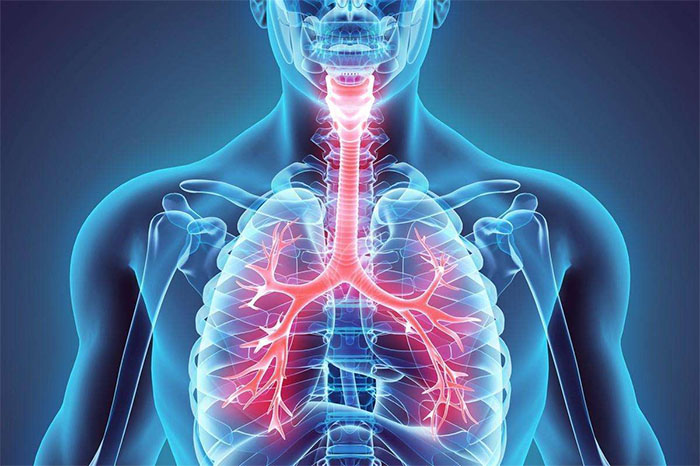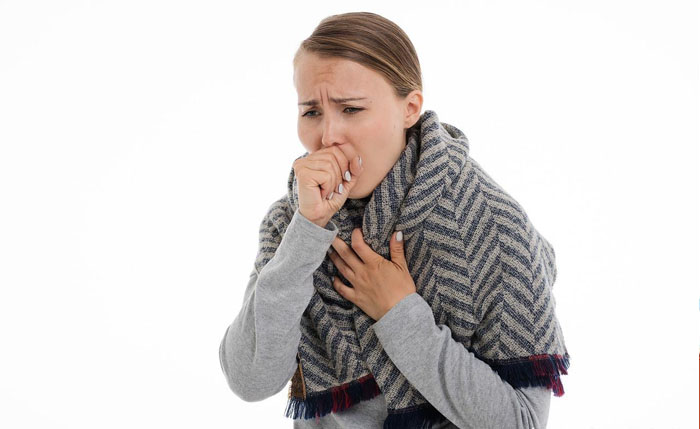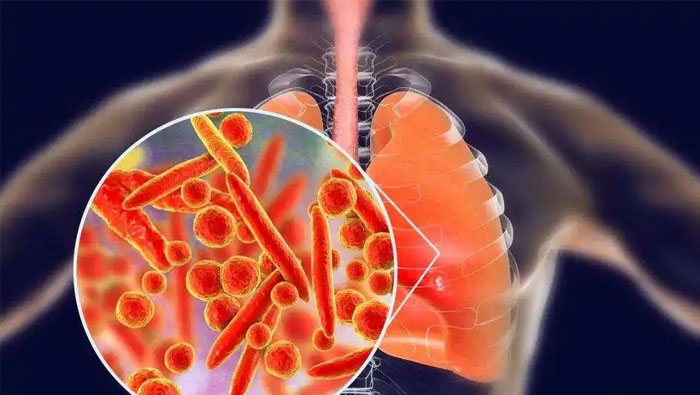- Login
- Cart{{shopingCartNum}}
- English
The term "respiratory tract infection" refers to infections of the nasal cavity, pharynx, trachea, bronchi, and lungs. These infections are contagious and can be transmitted through droplets, contact with contaminated objects, and other means. Symptoms typically include a runny nose, sore throat, cough, phlegm production, and fever. Treatment involves using appropriate anti-infective drugs targeted at the specific symptoms.
A respiratory tract infection is a collective term for upper and lower respiratory tract infections, primarily caused by viruses, bacteria, atypical pathogens, and fungi. Acute upper respiratory tract infections, often referred to as "upper respiratory infections," encompass acute inflammation from the external nasal openings to the lower edge of the cartilage ring, including acute inflammation of the nasal cavity, pharynx, or larynx. Lower respiratory tract infections involve the areas below the cartilage ring, encompassing infections of the trachea, bronchi, and lungs, such as tracheobronchitis and pneumonia.
Upper respiratory tract infections are among the most common contagious diseases, often occurring during the winter and spring seasons and typically manifesting as sporadic cases. The condition does not discriminate based on age, gender, occupation, or region. Those who are elderly, young, frail, immunocompromised, or have chronic respiratory diseases are more susceptible. On average, adults experience 2-4 upper respiratory tract infections per year, while preschool children may experience 4-8 episodes annually.

Upper Respiratory Tract Infection
Acute upper respiratory tract infections are further classified into viral upper respiratory tract infections and bacterial upper respiratory tract infections. Clinical symptoms largely overlap, but viral upper respiratory tract infections tend to progress more slowly.
Viral Infection Types
These include common cold, acute viral pharyngitis, and acute viral laryngitis.
Common cold: Onset is sudden, caused by rhinoviruses, coronaviruses, etc., primarily manifesting in nasal symptoms.
Acute viral pharyngitis: Caused by rhinoviruses, adenoviruses, influenza viruses, parainfluenza viruses, etc., with prominent symptoms of throat dryness and burning sensation.
Acute viral laryngitis: Caused by influenza viruses, parainfluenza viruses, and adenoviruses.
Bacterial Infection Types
These include acute pharyngitis, tonsillitis, and acute epiglottitis.
Acute pharyngitis and tonsillitis: Mostly caused by group A hemolytic streptococci. Onset is sudden, with significant throat and swallowing pain often accompanied by fever.
Acute epiglottitis: Onset is sudden, with causative pathogens including Haemophilus influenzae, Staphylococcus aureus, streptococci, and pneumococci. This condition is rare in adults, with mild symptoms, but it can progress rapidly in children.
Lower Respiratory Tract Infection / Tracheobronchitis
This refers to acute inflammation of the tracheal and bronchial mucosa caused by pathogenic infections.
Pneumonia
This term encompasses a broad category of inflammatory diseases involving the pulmonary alveoli, distal airways, and lung interstitium, caused by factors such as bacteria, viruses, and other pathogens. This includes bacterial pneumonia, viral pneumonia, and atypical pneumonia.
Bacterial pneumonia: Often caused by Streptococcus pneumoniae, Staphylococcus aureus, group A streptococci, Klebsiella pneumoniae, Haemophilus influenzae, Pseudomonas aeruginosa, and Acinetobacter baumannii, among others.
Viral pneumonia: Often caused by influenza viruses, parainfluenza viruses, coronaviruses, adenoviruses, respiratory syncytial virus, measles virus, and cytomegalovirus, among others.
Atypical pneumonia: Can be caused by Legionella, Mycoplasma, and Chlamydia, among others.
Causes
Respiratory tract infections are primarily caused by viral or bacterial infections. When predisposing factors such as exposure to cold, rain, or excessive fatigue weaken the body's overall or local respiratory defense mechanisms, viruses or bacteria already present in the upper respiratory tract or introduced from the external environment can rapidly multiply. This is particularly true for the elderly, young, frail individuals, or those with chronic respiratory diseases such as sinusitis, tonsillitis, bronchiectasis, or chronic obstructive pulmonary disease, who are more susceptible to infection.

Upper Respiratory Tract Infection
Around 70% to 80% of acute upper respiratory tract infections are caused by viruses, including rhinoviruses, coronaviruses, adenoviruses, influenza viruses, parainfluenza viruses, respiratory syncytial virus, echoviruses, and coxsackieviruses. Additionally, 20% to 30% of upper respiratory tract infections are caused by bacteria, either occurring independently or as a secondary infection following a viral infection. The most common bacteria include Streptococcus pneumoniae, followed by Haemophilus influenzae, Streptococcus pyogenes, and Staphylococcus aureus.
Lower Respiratory Tract Infection
Tracheobronchitis often develops as a complication of upper respiratory tract infections. Pneumonia occurs when pathogens invade the lung parenchyma, leading to excessive growth beyond the host's defense capacity, resulting in inflammatory reactions within the pulmonary alveoli. Pathogenic bacteria generally invade the human respiratory tract through inhalation, blood transmission, or spread from nearby infected areas.
Triggering Factors for Respiratory Tract Infections
Factors such as getting caught in the rain, exposure to cold, sudden changes in climate, and excessive fatigue can reduce the local defense function of the respiratory tract, allowing existing viruses or bacteria to rapidly multiply. Direct contact with infected individuals, through sneezing, airborne transmission, or contact with contaminated hands and objects, can also trigger the disease.
Symptoms
Respiratory tract infections exhibit varying symptoms based on the type of illness and the causative agent. However, common symptoms include sneezing, nasal congestion, clear nasal discharge, sore throat, cough, fever, chills, and headache. Lower respiratory tract infections may also present with purulent or bloody sputum, along with shortness of breath and difficulty breathing.
Common Cold
The incubation period is short, usually 1 to 4 days, with a sudden onset characterized by dry, itchy, or burning sensations in the throat. Within a few hours, symptoms such as sneezing, nasal congestion, and clear nasal discharge may appear. After 2 to 3 days, the nasal discharge becomes thicker, accompanied by sore throat, headache, tearing, dulled sense of taste, breathing difficulty, hoarseness, and occasionally, eustachian tube inflammation leading to reduced hearing. Severe cases may involve fever, mild chills, and headache. Without complications, recovery typically occurs within 5 to 7 days.
Acute Viral Pharyngitis
Clinical features include throat itching and burning, with rare occurrences of cough and possible pain. Infections by influenza viruses and adenoviruses may lead to fever, fatigue, significant throat congestion, edema, and tender submandibular lymph nodes. Adenovirus infections often present with concurrent conjunctivitis. Swallowing pain often indicates streptococcal infection.
Acute Viral Laryngitis
This condition manifests as hoarseness, difficulty speaking, painful coughing, along with fever, pharyngitis, or coughing. Physical examination may reveal edema and congestion in the larynx, mild enlargement and tenderness of local lymph nodes.
Herpangina
Characterized by pronounced throat pain and fever, the illness typically lasts about a week. Physical examination may reveal throat congestion, as well as gray-white vesicles and superficial ulcers on the soft palate, uvula, pharynx, and tonsils, surrounded by erythema. It is more common in children and occasionally occurs in adults, especially during summer.

Pharyngoconjunctival Fever
Patients exhibit fever, throat pain, photophobia, and tearing. Physical examination may reveal significant congestion in the throat and conjunctiva. The illness typically lasts 4 to 6 days and is more common in summer, often transmitted during swimming, and is more prevalent in children.
Bacterial Pharyngotonsillitis
The onset is sudden, with notable throat pain, chills, fever, and temperatures reaching 39°C or higher. Physical examination may reveal significant throat congestion, enlarged and congested tonsils with yellowish exudates on the surface, enlarged and tender submandibular lymph nodes, with no abnormal findings in the lungs.
Tracheitis/Bronchitis
Initially, symptoms are similar to those of upper respiratory tract infections, such as nasal congestion, rhinorrhea, and throat pain. As the illness progresses, coughing may develop, with varying severity and the presence of sputum, which can be purulent or non-purulent. Bacterial infections often involve yellowish purulent sputum, with the consistency ranging from mucoid to mucopurulent. Severe coughing may lead to hemoptysis, typically lasting 7 to 10 days, but can persist for over a month. Systemic symptoms are mild and may include mild chills, fever, and generalized body aches.
Pneumonia
Common symptoms include coughing and sputum production, with coughing typically being the earliest symptom. Sometimes, the sputum may be purulent or bloody, accompanied by shortness of breath and difficulty breathing. In children under 2 years old, the onset is abrupt, often preceded by symptoms of upper respiratory tract infection, primarily presenting as fever, cough, dyspnea, and fixed pulmonary rales.
Seeking Medical Attention
When symptoms such as nasal congestion, rhinorrhea, sneezing, coughing, throat pain, and general fatigue, fever, or shortness of breath occur, prompt medical attention is advised. Typically, a physical examination is conducted to initially assess the condition, followed by laboratory tests such as complete blood count and pathogen identification, as well as imaging studies such as X-rays or CT scans to determine the cause and initiate targeted treatment accordingly.

Respiratory Medicine, Infectious Disease, Emergency Department
For upper respiratory tract infections, clinical diagnosis can be made based on symptoms and signs in the nasopharynx, peripheral blood tests, and negative chest X-ray findings. Generally, there is no need for etiological diagnosis. In special cases, bacterial cultures, virus isolation, or virus serological tests may be performed to determine the pathogen.
For lower respiratory tract infections such as tracheobronchitis, clinical diagnosis can be made based on medical history, symptoms like cough and sputum, scattered dry or moist rales in the lungs, along with blood tests and chest X-ray findings. Pneumonia can be diagnosed based on medical history, imaging studies such as chest X-rays, and CT scans to confirm the presence of lung lesions and to rule out tuberculosis, tumors, embolism, pulmonary edema, atelectasis, and other diseases.
What physical examinations are needed for respiratory tract infections?
Physical examinations are used for preliminary assessment of the patient's condition. Typically, the examination may reveal swelling and congestion in the throat, local lymph node enlargement and tenderness, as well as enlargement and congestion of the tonsils.
For patients with tracheobronchitis, rough breathing sounds may be heard. When mucus secretions are present in the larger airways, rattling or snoring sounds may be heard, which disappear after coughing. When watery secretions are present in the smaller airways, bubbling sounds may be heard, which become more apparent after coughing.
What are the relevant tests for respiratory tract infections?
Laboratory tests
Complete blood count (CBC)
Helps differentiate between bacterial and viral infections. Normal or reduced total white blood cell counts with an increased lymphocyte ratio suggest a viral infection, while elevated total white blood cell counts and increased neutrophil counts with left shift suggest a bacterial infection.
Pathogen detection
Used to identify the causative agent, immunofluorescence, enzyme-linked immunosorbent assay, serological diagnosis, polymerase chain reaction, or virus isolation may be used. Throat swab cultures can isolate viruses or bacteria, bacterial cultures and drug sensitivity tests can guide clinical treatment.
Biochemical tests
Include C-reactive protein, serum amyloid protein, and α1-acid glycoprotein assays, which are helpful for identifying the cause and clinical classification.
Imaging tests
X-ray examination
Can help exclude lung bronchial lesions, and for pneumonia patients, it can also provide information on the extent, location, and cavitation of the lesions.
CT scan
Computed tomography (CT) imaging of the lungs can clarify the location and severity of pneumonia lesions, assess the effectiveness of treatment, monitor the recovery of the condition, and can also be used for differential diagnosis of other lung diseases.
Other tests
When it is necessary to determine the extent of lower respiratory tract infections, arterial blood gas analysis and lung ventilation function tests may be performed to understand oxygenation and acid-base balance status.

Upper Respiratory Tract Infection (URTI) vs. Allergic Rhinitis
Clinically, URTI can resemble the common cold, but unlike allergic rhinitis, it presents with abrupt onset, itching in the nasal cavity, frequent sneezing, clear nasal discharge, absence of fever, and less coughing. It is often triggered by allergens such as dust mites, dust, animal fur, and low temperatures. Symptoms disappear within minutes to 1-2 hours after removing the allergen. Increased eosinophils in nasal secretions and positive skin allergy tests help in differentiation.
URTI vs. Influenza
Influenza often occurs in distinct outbreaks. It has a sudden onset, severe systemic symptoms, high fever, generalized body aches, and marked conjunctival inflammation, but milder nasal and pharyngeal symptoms. Viral isolation or serological diagnosis aids in differentiation.
Pneumonia vs. Tuberculosis
Tuberculosis often presents with systemic toxicity symptoms such as low-grade fever in the afternoon, night sweats, fatigue, weight loss, insomnia, palpitations, etc. Chest X-rays reveal lesions mostly in the apical or supraclavicular regions of the lungs, with uneven density, slow resolution, and the potential formation of cavities or lung dissemination. Tubercle bacilli can be found in sputum. Generally, antibiotic therapy is ineffective. These distinct features can aid in differentiation.
Pneumonia vs. Lung Cancer
Lung cancer usually lacks acute infectious symptoms and may show blood-tinged sputum. Lung cancer can be associated with obstructive pneumonia. Following antibiotic therapy, the inflammation subsides, and the tumor shadow becomes more apparent. Enlarged mediastinal lymph nodes may be visible, and sometimes lung collapse occurs. Differentiation is possible based on the absence of high white blood cell counts and the presence of cancer cells in sputum.
Treatment
Respiratory tract infections are primarily treated with antimicrobial therapy, complemented by symptomatic management to alleviate symptoms, shorten the course, and prevent complications. Specific treatment plans should be tailored according to the type of disease.
Treatment during the acute phase of respiratory tract infections
This primarily applies to severe pneumonia patients. In addition to antimicrobial therapy targeting the pathogen, it is essential to maintain fluid-electrolyte balance, correct hypoproteinemia, provide nutritional support, and consider adjunctive measures such as aerosol therapy, postural drainage, and chest physiotherapy. Patients with hypoxemia should receive oxygen therapy to maintain blood oxygen saturation above 90%, while those requiring respiratory support should promptly undergo mechanical ventilation to restore effective ventilation and improve oxygenation.
General treatment measures for respiratory tract infections
When systemic symptoms are present, adequate rest and warmth are recommended, along with increased fluid intake.
Medication for respiratory tract infections
Due to significant individual differences, there is no absolute "best," "fastest," or "most effective" medication. Apart from commonly used over-the-counter drugs, the most appropriate medication should be selected in consultation with a physician based on individual circumstances.
Upper Respiratory Tract Infection
In addition to symptomatic medication, antibiotics may be used based on the severity of the condition.
Antipyretic and Analgesic Drugs
For severe symptoms such as fever, headache, and generalized body aches, especially in elderly or debilitated individuals, antipyretic and analgesic drugs such as acetaminophen, aspirin, or ibuprofen may be used. For sore throat, inhalation therapy or lozenges such as watermelon frost may be applied.
Decongestant Drugs
In cases of nasal congestion, nasal mucosal congestion, and edema, or sore throat, selective vasoconstrictors of the upper respiratory mucosa such as pseudoephedrine hydrochloride may be used, or 1% ephedrine hydrochloride may be used as nasal drops.
Antiallergic Drugs
For patients with frequent sneezing and excessive runny nose, antiallergic drugs such as chlorpheniramine maleate or pheniramine maleate may be chosen. To minimize dizziness, drowsiness, and other adverse reactions caused by these drugs, it is advisable to take them before bedtime.
Antitussive and Expectorant Drugs
Patients with cough symptoms should take expectorants such as ambroxol, bromhexine, N-acetylcysteine, or carbocisteine. However, cough suppression is generally not recommended, but may be used if coughing interferes with rest. Commonly used cough suppressants include codeine and dextromethorphan.
Antimicrobial Drugs
Antiviral drugs such as ribavirin and amantadine should be used to treat viral infections, such as influenza. Antibacterial drugs should be used for bacterial infections and can include macrolides, penicillins, cephalosporins, quinolones, or ketolides. Oral administration is generally sufficient for most patients, but in cases of severe symptoms, intramuscular injection or intravenous infusion may be necessary. A few patients may require medication based on the results of pathogen culture.
Tracheobronchitis
For dry or minimally productive cough, medications such as dropropizine, dextromethorphan, or codeine may be administered orally. In cases of thick, difficult-to-expectorate sputum, ambroxol or bromhexine may be taken orally, or saline solution may be used for ultrasonic nebulization. In the presence of wheezing, aminophylline, terbutaline, or salbutamol may be used. High fever may be treated with compound aspirin and other drugs.
In cases of confirmed bacterial infection, antimicrobial drugs should be used. Options include macrolides, penicillins, cephalosporins, or quinolones, and in some cases, intramuscular or intravenous administration may be necessary. A few patients may require medication based on the results of pathogen culture.
Pneumonia
Treatment primarily involves antimicrobial drugs, which should be chosen based on microbiological culture and drug sensitivity testing results. Additionally, cough suppressants and antipyretic and analgesic drugs may be administered based on symptoms.
For outpatient management of mild cases, orally administered antimicrobial drugs with good bioavailability, such as amoxicillin, doxycycline, and respiratory fluoroquinolones, are preferred.
For hospitalized patients, monotherapy with β-lactams or combination therapy with doxycycline, minocycline, macrolides, or monotherapy with respiratory fluoroquinolones is recommended. Patients requiring intensive care in the absence of underlying diseases, particularly young adults, are recommended to receive intravenous treatment with penicillin/β-lactamase inhibitor complexes, third-generation cephalosporins, or meropenem in combination with macrolides or monotherapy with respiratory fluoroquinolones, while older adults or patients with underlying diseases are recommended to receive combination therapy.
The treatment of severe pneumonia should initially involve broad-spectrum, potent antimicrobial drugs, administered in adequate doses and combinations, such as combination therapy with β-lactams and macrolides or fluoroquinolones.
Traditional Chinese medicine treatment for respiratory tract infections involves the use of Chinese herbal medicine with heat-clearing, detoxifying, and antiviral properties to improve symptoms and shorten the course of the illness.
Prognosis:
The prognosis of upper respiratory tract infections is generally good for most patients as it is a self-limiting disease. However, individuals with weakened immune systems or underlying chronic lung conditions, such as chronic obstructive pulmonary disease (COPD), may have a poorer prognosis. Acute tracheitis/bronchitis patients generally have a good prognosis, while some may experience prolonged recovery. Timely and standardized treatment for chronic tracheitis/bronchitis can control symptoms effectively, but poorly managed cases can develop into chronic obstructive pulmonary disease or even pulmonary heart disease, leading to a poor prognosis. Pneumonia prognosis varies with the type of infection, with most cases not leaving scars and allowing for the restoration of normal lung structure and function. However, certain bacterial and fungal pneumonias may lead to lung tissue necrosis and cavitation, especially in elderly individuals with a history of heavy smoking, chronic heart or lung conditions, or low protein levels, resulting in an extended hospital stay and a poor prognosis.
Possible Complications of Respiratory Tract Infections:
Upper Respiratory Tract Infections:
Untreated upper respiratory tract infections may lead to acute sinusitis or otitis media. Pharyngitis may lead to complications such as rheumatic fever and glomerulonephritis, while some patients may develop viral myocarditis. Patients with underlying conditions such as COPD, asthma, or bronchiectasis may experience acute exacerbations. Patients with heart failure may experience worsening symptoms.
To prevent viral myocarditis, it is important to rest to reduce cardiac workload, improve myocardial metabolism and cardiac function, promote myocardial repair, maintain a balanced diet, avoid overeating and the consumption of spicy, irritating, or fatty foods, and prevent constipation. Close monitoring of symptoms and seeking medical attention promptly are also essential to prevent other upper respiratory tract infections.
Lower Respiratory Tract Infections:
Pneumonia complications may include pleural effusion, empyema, pleurisy, pulmonary bullae, and septicemia. Pleural effusion may result from untreated pleural involvement in pneumonia. Empyema occurs when bacteria invade the lungs, leading to purulent effusion, which can be alleviated through anti-infective therapy and closed thoracic drainage. Pulmonary bullae form due to damaged alveolar structures, leading to air trapping and the enlargement and rupture of alveoli. Septicemia can occur when untreated or improperly managed lung infections allow bacteria to enter the bloodstream, potentially leading to septic shock, characterized by low blood pressure, cold extremities, sweating, tachycardia, and arrhythmias.
Daily Care:
Scientific and reasonable dietary, exercise, and rest habits are essential for maintaining normal bodily functions and supporting the general management of respiratory tract infections. Strengthening daily management, such as avoiding contact with infected individuals, preventing colds by avoiding temperature fluctuations, and receiving relevant vaccinations, can help prevent respiratory tract infections.
Home Care for Respiratory Tract Infections:
During fever, patients should rest in bed, reduce physical activity, ensure good ventilation, and maintain fresh indoor air at an appropriate temperature and humidity (ideally 18-20°C and 60% humidity). Patients should maintain a positive mindset, as excessive worry, mental tension, and sensitivity are not conducive to recovery. Therefore, it is important to eliminate pessimistic emotions. During the recovery period, patients can alleviate negative emotions by reading, listening to music, and watching entertainment programs.
Management of daily life for patients with respiratory tract infections should pay attention to the following:
After sweating, one should promptly change underwear and bedding to keep the skin clean and dry. Additionally, it is important to be mindful of temperature changes and ensure warmth.
A diet rich in high protein, high vitamins, sufficient calories, and easily digestible foods is preferred. Avoiding stimulating foods is recommended, and those with a fever should increase their water intake appropriately. After eating, it is important to rinse the mouth or provide oral care to prevent oral infections.
Avoid getting cold or getting caught in the rain, as well as excessive fatigue. It is important to maintain regular and moderate exercise to enhance physical fitness. Additionally, maintaining a regular schedule, avoiding smoking and alcohol, and balancing work and rest are essential. Furthermore, it is important to maintain a regular lifestyle, avoid smoking, and refrain from drinking alcohol.
Which indicators of respiratory tract infection should be monitored daily?
Patients should measure their body temperature daily. When a temperature greater than 38°C is observed, physical cooling methods, such as warm water sponging, can be used. If there is no relief or if other symptoms such as headache, coughing up blood, or dizziness occur, seeking medical attention or follow-up is necessary.
Other considerations:
Respiratory tract infections are infectious diseases, so family members should be mindful of isolating the patient. Additionally, the patient's personal items such as tableware and clothing should be regularly disinfected to prevent cross-infection.
It is important to follow medical advice when using medication, and to understand the name, purpose, dosage, usage, adverse reactions, and precautions of the medication. For example, chlorpheniramine maleate may cause dizziness and drowsiness, so it is best taken before bedtime. Drivers and high-altitude workers should avoid using it. Those taking antipyretic analgesics should avoid excessive sweating to prevent heat exhaustion.
Avoid overuse of antibiotics, as they are almost ineffective against viruses and should only be used for bacterial infections. They are not necessary for upper respiratory tract infections caused by viruses.
For patients with tracheitis or bronchitis, if they experience chest pain, severe difficulty breathing, intense fatigue, dizziness, and nausea during exercise, they should stop exercising and seek medical attention if there is no relief after resting.
How to prevent respiratory tract infections?
Avoiding triggers
Isolating the source of infection helps to avoid transmission. Improving nutrition, maintaining regular eating habits, avoiding cold and excessive fatigue can help reduce susceptibility. Elderly and frail individuals should take precautions, wear masks during outbreaks of upper respiratory infections, and avoid crowded public places.
Enhancing physical fitness
Prevention can be achieved by strengthening exercise and physical fitness. Regular and moderate aerobic exercise, such as jogging, climbing stairs, and playing basketball, is generally recommended.
Immune modulating drugs and vaccines
For patients who frequently experience upper respiratory infections, BCG or astragalus oral solution may be used as appropriate. Those with suitable indications can receive a pneumococcal vaccine. Additionally, the combined use of influenza and pneumonia vaccines can enhance immunity, significantly preventing lower respiratory tract infections.